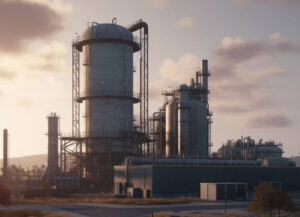Can U.S. Heatwaves Drive Short-Term Utility Demand?
At Extreme Investor Network, we understand that weather patterns can significantly impact market dynamics, especially within the utility sector. Recent forecasts indicate a surge in above-normal temperatures across the United States from June 23 to 27. This uptick in heat levels, as predicted by Vaisala, is likely to ramp up demand for air conditioning, subsequently increasing the reliance on natural gas for power generation. While the current demand metrics may appear subdued, this temporary weather shift could play a critical role in rebalancing supply and demand within the market.
Is Domestic Supply Still Overpowering Consumption?
As we dive deeper into market conditions, it’s essential to analyze the ongoing supply-demand dynamics. Data from Bloomberg New Energy Finance (BNEF) highlights that Lower-48 states are witnessing dry gas production at an impressive 105.4 billion cubic feet per day (bcf/day), which is a 3.2% year-over-year increase. In contrast, demand is lagging behind at a mere 70.3 bcf/day, reflecting a decline of 5.2% year-over-year. Although we observe a modest uptick in LNG feedgas flows to 13.8 bcf/day, the overall picture appears bearish, as the Edison Electric Institute reports a 2.7% year-on-year decrease in U.S. electricity output for the week ending June 7. This combination of robust supply and decreasing consumption tempers any bullish sentiments stemming from the impending heatwave.
What Does the Latest Storage Build Signal?
Navigating through the latest EIA report reveals a somewhat bearish tone, reinforcing the necessity for careful market analysis. U.S. storage levels rose by 109 bcf, surpassing both the 108 bcf estimate and the five-year average build of 87 bcf. Although inventories are currently 5.4% ahead of their five-year seasonal average, they remain 9% lower year-over-year. Interestingly, Europe appears to be in a tighter position, with storage only 52% full as of June 10, lagging behind the five-year seasonal average of 62%. This disparity emphasizes the importance of monitoring global storage levels, which can have ripple effects on the domestic market.
Market Forecast: Will the 200-Day SMA Act as Resistance or Break Point?
For traders and investors, understanding technical indicators is crucial in navigating market volatility. Natural gas prices are currently finding support between $3.381 and $3.453, creating a solid technical base. With Friday’s closing price at $3.581, we find ourselves hovering just below the significant 200-day Simple Moving Average (SMA) of $3.576. This level is pivotal for future price movement.
A sustained break above the 200-day SMA could signal a bullish trend, potentially steering prices toward the $3.80 region near the 50-day SMA. Conversely, if the market fails to reclaim this resistance level, we may witness prices settling once again in the lower $3.40s. Current sentiment remains cautiously bullish; however, it’s contingent on forthcoming catalysts, whether they be geopolitical or weather-related.
For those looking to capitalize on market opportunities, keep an eye on our Economic Calendar for real-time updates and insights to inform your trading strategy.
At Extreme Investor Network, we don’t just provide data; we strive to offer actionable insights for the astute investor. By keeping our finger on the pulse of market trends, we empower you to make informed decisions that can lead to financial growth. Stay tuned for more updates as we navigate the ever-changing landscape of the stock market together!

